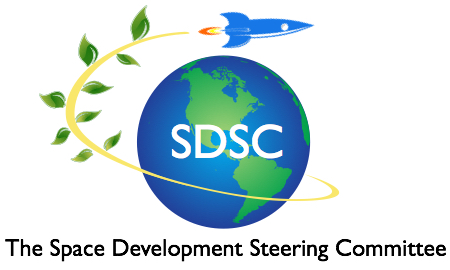The Space Development Steering Committee calls for NASA to establish a new COTS program, a program to establish a permanent human base on the Moon. A Moon program designed to get the heavy lifting done by private companies—SpaceX, Blue Origin, Bigelow Aerospace, United Launch Alliance, and any other companies eager to put down stakes on the big wheel of green cheese over our heads.
What is a COTS program? COTS stands for “Commercial Orbital Transportation Services.” To quote a NASA press release, a COTS program is designed “to encourage the growth of the private spaceflight sector.” Under a COTS program, NASA establishes a goal, asks private companies to propose technologies to achieve that goal, requires those private companies to set their price for delivering on their proposals, then picks the leading competitors and pays them in stages to go from mere plan to reality.
In 2011, America was crippled. We were deprived of our ability to take Americans into space on American vehicles. The Space Shuttle was retired to make room for what evolved into a rocket called the Space Launch System and a capsule called Orion. Alas, the Space Shuttle and Orion were not able to fly. They still aren’t.
But in the six years since the retirement of the Shuttle, America’s space launch capabilities have been utterly transformed. Today we can launch cargo into space at one twentieth of NASA’s traditional costs. Or at one thirty-third the price of a proposed Space Launch System liftoff. We can put more cargo into space for less. In fact, we can put enough cargo into space to buy an entire space program at the cost of a single old-fashioned launch.
And within eighteen months, we’ll be able to put Americans into space. Yes, American humans. On American rockets. Again, for one-twentieth of traditional costs. This miracle of cost-reduction has not been provided by NASA’s Space Launch System and Orion. It’s been generated by a brilliant NASA innovation of a radically different kind, COTS programs. Under COTS programs, as Samantha Masunaga of the Los Angeles Times, writes: “In 2006, SpaceX won its first NASA award for $278 million to help develop the company’s now-workhorse Falcon 9 rocket and Dragon space capsule. It later received an additional $118 million, and SpaceX contributed a total of about $454 million of its own funds to finish development, according to a NASA report. Two years later, SpaceX won a $1.6 billion NASA contract to transport cargo to the space station.”
To date, SpaceX’s Falcon rockets and Dragon capsules have delivered ten cargo payloads to the International Space Station. At the lowest prices in NASA history. Development of NASA’s Space Launch System mega-rocket will cost a total of $30 billion. And development of the Orion capsule will cost $6 billion more. Development of SpaceX’s Falcon rocket PLUS the Dragon capsule cost $1 billion. One thirty-sixth the cost. All thanks to COTS.
The current COTS program is about to expire, freeing up to a billion dollars a year of NASA’s money. A powerful cabal in the House and Senate will do everything in its power to pour that billion into the rocket that’s too expensive to fly—the Space Launch System—and into its companion, the overpriced and underperforming Orion capsule. And the SLS and Orion can’t even land on the Moon. Or on Mars.
But there are vehicles that CAN land. They come from Elon Musk’s SpaceX and from Jeff Bezos’ Blue Origin. They are the relandable Falcon rocket, the relandable Dragon 2 capsule, Bezos’ still-on-the-drawing-boards New Armstrong, and Bezos’ Blue Moon, all vehicles equipped with retrorockets that can gentle them down to a surface with pinpoint accuracy. And there’s a habitat that can give Americans a permanent dwelling place on the Moon. It comes from Robert Bigelow’s Bigelow Aerospace. It’s a moon base made of three inflatable 330-cubic meter housing modules.
The Space Development Steering Committee, a space advocacy organization of space industry professionals from NASA, the National Science Foundation, and the National Space Society created in 2006 at the suggestion of astronaut Buzz Aldrin, calls on the House and Senate to sidestep the temptation to slide the newly freed COTS billion dollars into the Space Launch System and the Orion. And the Space Development Steering Committee calls on Congress and the president to establish a new COTS program—one to put humans on the moon. This time to stay.
When it comes to a permanent human presence on the Moon, SpaceX, Blue Origin, and Bigelow have shown us a whole new way.
